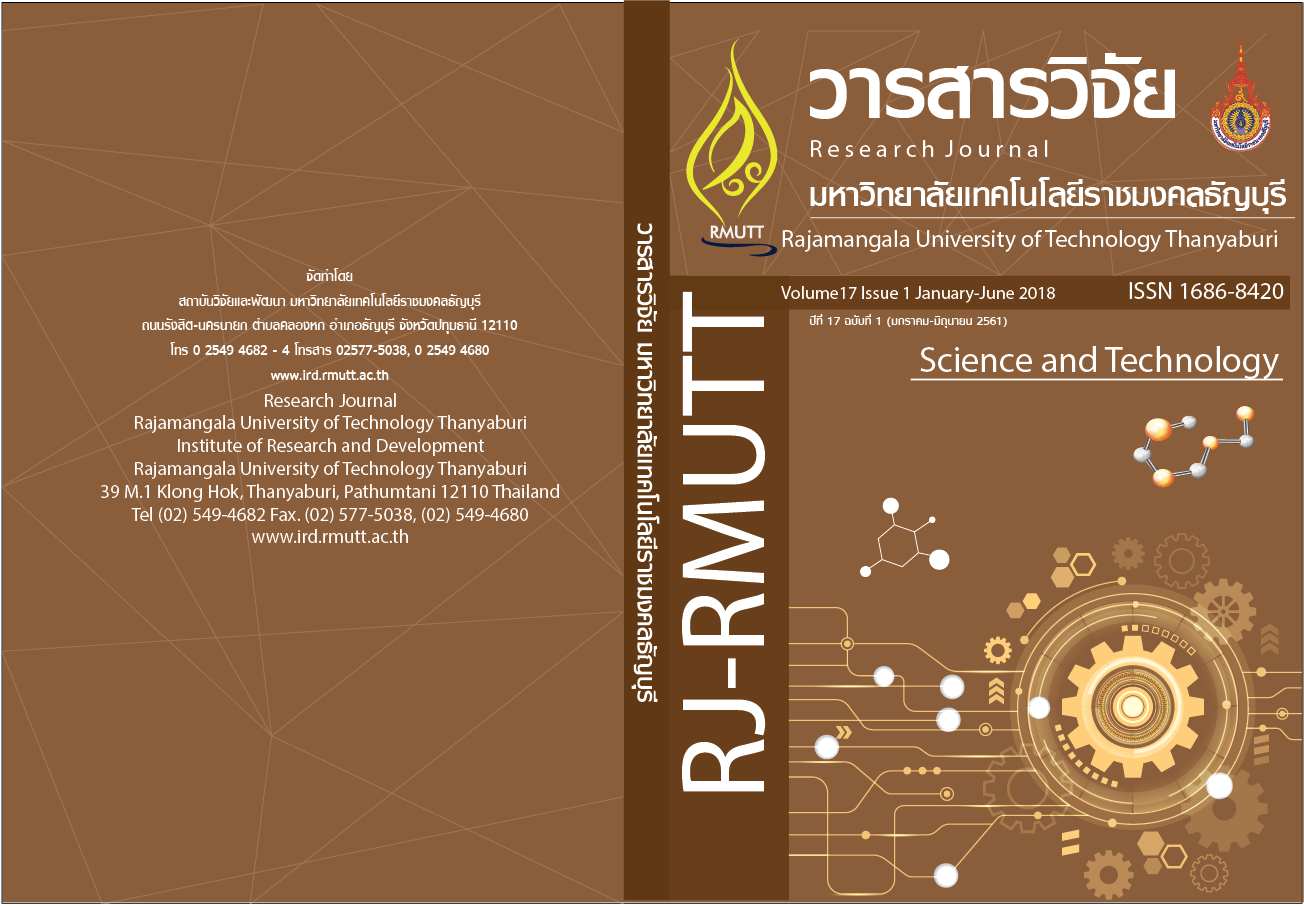A Prototype of Soil Monitoring and Notification System in Durian Farm: A Case Study of Bueng Ka Sam, Nong Suea, Pathum Thani
Main Article Content
Abstract
One factor that affects the durian’s growing process in the target area is that the majority of the farmers do not own the system that measures soil moisture and makes an immediate report. The soil is sent to the lab and it generally requires approximately 3 to 4 months to produce the result, which is not the effective way because often the soil moisture changes when the result comes back. Therefore, the soil monitoring and notification system in durian farm to overcome such problems was developed in this research and deal with farmers directly. The methodology consists of investigating the requirements from users, analyzing and designing the system, developing the prototype in software which applied knowledge-based, and hardware parts which are the connected circuits, and sensors which measure soil pH, moisture, temperature and light volume, installing the system, and transferring the technology to the target group. The results show that the prototype system is running normally. It was powered by solar energy allowing it to keep operate off grid. The farmers can adjust the value of soil moisture and pH according to their formula via the application. The server can handle a substantial number of sensors that will increase in the future. The evaluation of the system was marked as “Very Good” from users’ satisfaction. Besides, the cost was reasonably low, and it helps the farmers to reduce their investment. In the future, it is possible to reduce the cost of prototype equipment as well as it can apply to the intelligent farm with other plants.
Article Details
References
สำนักงานเศรษฐกิจการเกษตร. (2559). สถานการณ์สินค้าเกษตรที่สำคัญและแนวโน้มปี2560. สำนักงานเศรษฐกิจการเกษตรกระทรวงเกษตรและสหกรณ์
หน่วยถ่ายทอดเทคโนโลยีศูนย์วิจัยพืชสวนจันทบุรี. (2551). เทคโนโลยีการผลิตทุเรียนให้มีคุณภาพศูนย์วิจัยพืชสวนจันทบุรี. สถาบันวิจัยพืชสวนกรมวิชาการเกษตร.
Kaewmard, N. and S. Saiyod. “Sensor data collection and irrigation control on vegetable crop using smart phone and wireless sensor networks for smart farm”. IEEE Conference on Wireless Sensors, Subang, Malaysia, 2014.
Phanthuna, N. and T. Lumnium. (2017). Design and Application for a Smart Farm in Thailand Based on IoT. Applied Mechanicsand Materials, 866(1), 433-438.
Karagiannis,V., P. Chatzimisios, F. Vazquez-Gallego and J. Alonso-Zarate. (2015). A Survey on Application Layer Protocols for the Internet of Things. Transaction on IoT and Cloud Computing, 137(7), 1-10
Witthayawiroj, N. and P. Nilaphruek. (2017). The Development of Smart Home System for Controlling and Monitoring Energy Consumption using WebSocket Protocol. IOP Conference Series: Materials Science and Engineering. 185(1), 1-6.
Dennis,A., W. H. Barbara and D. Tegarden. (2015). Systems analysis and design: An object-oriented approach with UML. 5thed. John Wiley andSons.
Baron,S., P. Zaitsev and V. Tkachenko. (2012). High performance MySQL: optimization, backups, and replication. O'Reilly Media, Inc.
Kevin,Y. (2004). Build your own database driven website using PHP & MySQL. 4th ed. Austalai, SitePoint Pty Ltd,.
T. Stefan and S. Vinoski. (2010). Node. js: Using JavaScript to build high-performance network programs. IEEE Internet Computing, 14(6), 80-83.
DiMarzio and F. Jerome. 2016. Beginning Android Programming with Android Studio. 4th ed. John Wiley & Sons.
Singh,A. and Sonal. “An improvement over Kalman filter for GPS tracking”. Present at 3rd International Conference on Computing for Sustainable Global Development (INDIACom). New Delhi, India, 2016.
Bruno,G.and P. Trezentos. “Impacts of data interchange formats on energy consumption and performance in smartphones”. Proceedings of the 2011 workshop on open source and design of communication, Thailand, 2011


